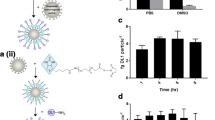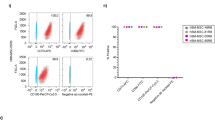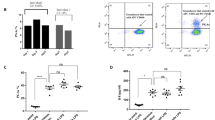Abstract
On inflamed endothelium the cell surface protein E-selectin isexpressed which supports the initial process of attachment –capturing and rolling of leukocytes. A recombinant CHO cell linesecreting a soluble E-selectin-IgG chimera was cultivated competitively under serum free conditions in three different bioreactor systems: a 1 l Super-Spinner, a 2 l stirred tank bioreactor equipped with a spinfilter, and a 100 l stirred tankbioreactor. In the smallest system 25.4 mg E-selectin-IgG wereproduced in 62 days using a repeated batch process whileachieving a maximal viable cell density of 3.7 × 106 cells ml-1. Using continuous perfusion mode a total amount of35.2 mg were produced with a maximal viable cell density of1.65 × 107 cells ml-1 in the 2 l bioreactor within 29 days. Large scale cultivation in a 100 l stirred tankbioreactor yielded 105.6 mg in three batches with a maximal viable cell density of 9.7 × 105 cells ml-1 within 15 days. After removal of the cells by continuous centrifugation and a depth filter clearance step, the supernatants were concentrated via ultra filtration. Purificationwas performed by affinity chromatography with rProtein A. Integrity of the E-selectin-IgG protein was checked with SDS PAGE. Its activity was verified in a cellular adhesion assay performed with HL-60 cells and a recombinant CHO cell line expressing membrane-anchored E-selectin constitutively, and E-selectin expressing HUVECs, respectively. Soluble E-selectin-IgG was used to block adhesion to these cell layerscompetitively. A concentation of 18.8 and 37.5 μg ml-1was sufficient to reduce the amount of adhering HL-60 cells to 50% on CHO and HUVEC layers, respectively.
Similar content being viewed by others
References
Bevilacqua MP, Pober JS, Mendrick DL, Cotran RS and Gimbrone Jr, MA (1987) Identification of an inducible endothelial-leukocyte adhesion molecule. Proc Natl Acad Sci USA, 84, 9238–9242.
Feizi T (2001) Carbohydrate ligands for the leukocyte-endothelium adhesion molecules, selectins. Results Probl Cell Differ 33: 201–223.
Hahne M, Jäger U, Isenmann S, Hallmann R and Vestweber D (1993) Five tumor necrosis factor-inducible cell adhesion mechanisms on the surface of mouse endothelioma cells mediate the binding of leukocytes. J Cell Biol 121: 655–664.
Heidemann R, Riese U, Lütkemeyer D, Büntemeyer H, Lehmann J (1994) The Super-Spinner: A low cost animal cell culture bioreactor for the CO2 incubator. Cytotechnology 14: 1–9.
Konstantopoulos K and McIntire LV (1996) Effects of fluid dynamic forces on vascular cell adhesion. J Clin Invest 98: 2661–2665.
Laferriere J, Houle F, Taher MM, Valerie K and Huot J (2001) Transendothelial migration of colon carcinoma cells requires expression of E-selectin by endothelial cells and activation of stress-activated protein kinase-2 (SAPK2/p38) in the tumor cells. J Biol Chem 276: 33762–33772.
Lehmann J, Piehl GW and Schulz R (1987) Bubble-free cell culture aeration with porous moving membranes. Dev Biol Stand 66: 227–240.
Lehmann J, Vorlop J and Büntemeyer H (1988) Bubble-free Reactors and their Development for Continuous Culture with Cell Recycle. In Spier RE and Griffiths JB (eds) Animal Cell Biotechnology. 3rd ed., Academic Press, New York, 221–237.
McEver RP (1997) Selectin-carbohydrate interactions during inflammation and metastasis. Glycoconj J 14: 585–591.
Murakami S, Morioka T, Nakagawa Y, Suzuki Y, Arakawa M and Oite T (2001) Expression of adhesion molecules by cultured human glomerular endothelial cells in response to cytokines: Comparison to human umbilical vein and dermal microvascular endothelial cells. Microvasc Res 62: 383–391.
Tedder, TF, Steeber, DA, Chen, A and Engel, P (1995) The selectins: Vascular adhesion molecules. FASEB J 9: 866–873.
Varki, A (1994) Selectin ligands. Proc Natl Acad Sci USA 91: 7390–7397.
Vestweber, D and Blanks, JE (1999) Mechanisms that regulate the function of the selectins and their ligands. Physiol Rev 79: 181–202.
Author information
Authors and Affiliations
Rights and permissions
About this article
Cite this article
Werner, A., Lütkemeyer, D., Poggendorf, I. et al. Serum-free production of a chimeric E-selectin-IgG protein from 1 to 100 l scale: Repeated batch cultivation versus continuous spin filter perfusion. Cytotechnology 38, 47–56 (2002). https://doi.org/10.1023/A:1021145813253
Issue Date:
DOI: https://doi.org/10.1023/A:1021145813253




